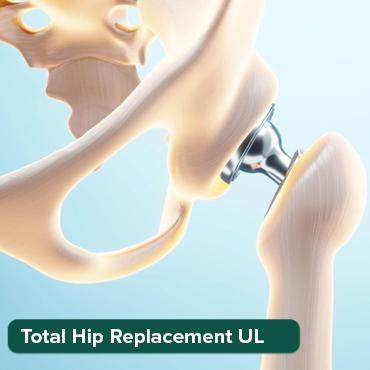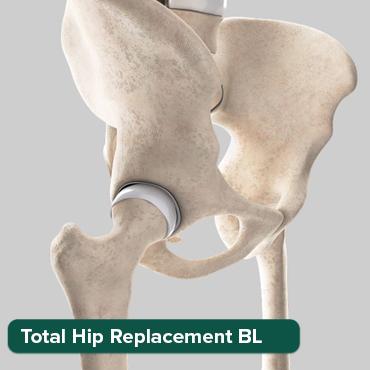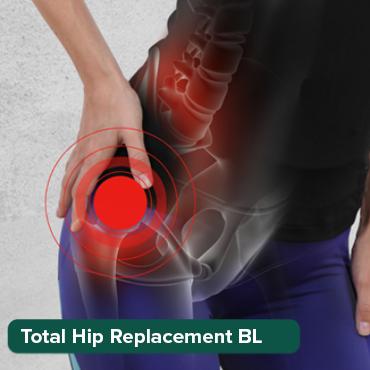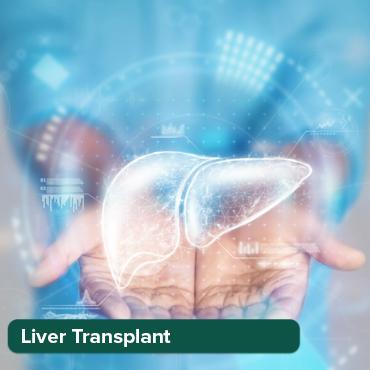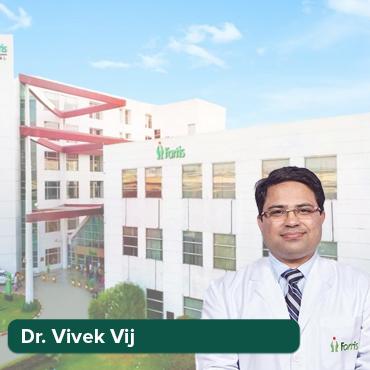
Healthtrip’s Guide to Treating Stroke in India
05 Jul, 2025
 Healthtrip
Healthtrip- Understanding Stroke: Types, Causes, and Risk Factors
- Why India for Stroke Treatment: Advantages and Considerations
- Leading Hospitals for Stroke Treatment in India
- Stroke Treatment Options Available in India < li>Recovery and Rehabilitation After Stroke in India
- Cost Considerations for Stroke Treatment in India
- Patient Stories: Success Stories of Stroke Treatment in India
- Conclusion
Understanding Stroke and Its Impact
Stroke, often referred to as a "brain attack," occurs when blood supply to a part of the brain is interrupted or severely reduced, depriving brain tissue of oxygen and nutrients. Within minutes, brain cells begin to die, leading to potential long-term disabilities or even death. There are two main types of stroke: ischemic stroke, caused by a blocked artery, and hemorrhagic stroke, caused by a ruptured blood vessel. Recognizing the signs of stroke is crucial for timely intervention. Remember the acronym FAST: Face drooping, Arm weakness, Speech difficulty, and Time to call for help. The faster you act, the better the chances of minimizing brain damage and improving recovery outcomes. Strokes can have a profound impact on individuals and families, leading to physical impairments like paralysis, speech problems, cognitive difficulties, and emotional challenges. Understanding the specific type of stroke, its severity, and the affected brain areas is essential for tailoring an effective treatment plan.
Most popular procedures in India
Emergency Stroke Treatment in India
When a stroke strikes, every second counts, therefore, prompt medical intervention is critical to minimize brain damage and improve the chances of recovery. In India, several hospitals are equipped to provide emergency stroke treatment, including thrombolysis (clot-busting drugs) and mechanical thrombectomy (surgical removal of the clot). Thrombolysis, ideally administered within the first few hours, can dissolve blood clots and restore blood flow to the brain. Mechanical thrombectomy, a more advanced procedure, involves inserting a catheter into the blocked artery to remove the clot physically. Hospitals like Fortis Escorts Heart Institute and Fortis Hospital, Noida, offer state-of-the-art facilities and experienced medical teams capable of performing these life-saving interventions. Furthermore, Max Healthcare Saket is prepared to rapidly asses and treat stroke patients. Choosing a hospital with a dedicated stroke unit and experienced specialists is crucial for receiving the best possible care during this critical time. Healthtrip can help you connect with these top-notch facilities and navigate the complexities of emergency stroke care.
Wellness Treatments
Give yourself the time to relax
Lowest Prices Guaranteed!

Lowest Prices Guaranteed!
Rehabilitation and Recovery After Stroke
Rehabilitation is a vital component of stroke recovery, helping patients regain lost functions and improve their quality of life. The rehabilitation process typically involves a multidisciplinary team of doctors, physiotherapists, occupational therapists, speech therapists, and psychologists, providing personalized care tailored to each patient's specific needs. Physiotherapy focuses on improving motor skills, balance, and coordination, while occupational therapy helps patients relearn daily living activities. Speech therapy addresses communication difficulties, and psychological support helps patients cope with the emotional challenges of stroke recovery. In India, many hospitals offer comprehensive stroke rehabilitation programs, including specialized therapies, assistive devices, and home-based rehabilitation services. Facilities like Fortis Memorial Research Institute, Gurgaon, and other leading hospitals across India, such as Max Healthcare Saket, provide comprehensive rehabilitation programs. Healthtrip can assist you in finding the best rehabilitation programs and connecting you with experienced therapists to guide you on your path to recovery. Remember, stroke recovery is a marathon, not a sprint, and with dedication and the right support, significant improvements are possible.
Understanding Stroke: Types, Causes, and Risk Factors
A stroke, sometimes referred to as a "brain attack," occurs when blood supply to a part of the brain is interrupted or reduced, depriving brain tissue of oxygen and nutrients. Within minutes, brain cells begin to die. This can lead to devastating and long-lasting effects, underscoring the critical importance of prompt diagnosis and treatment. Strokes are broadly classified into two main types: ischemic and hemorrhagic. Ischemic strokes, the more common type, are caused by a blockage in a blood vessel supplying the brain. This blockage is often due to a blood clot that forms in the brain or travels from another part of the body, such as the heart. Hemorrhagic strokes, on the other hand, occur when a blood vessel in the brain ruptures and bleeds. This bleeding can put pressure on the brain and damage brain tissue. Understanding these differences is crucial because the treatment strategies vary significantly depending on the type of stroke.
Ischemic Stroke: The Blockage
Ischemic strokes account for the majority of all stroke cases, approximately 85% of them. These strokes happen when arteries that supply blood to your brain become narrowed or blocked, causing severely reduced blood flow (ischemia). Blood clots or other debris traveling from other parts of your body, especially the heart, can cause the blockage. Further, the arteries may be narrowed by fatty deposits (atherosclerosis). Recognizing the underlying causes of ischemic stroke is essential in both preventing future events and tailoring treatment strategies effectively. For instance, individuals with atrial fibrillation, a type of irregular heartbeat, are at a higher risk of developing blood clots that can travel to the brain and cause a stroke. Managing this condition with medication or other interventions can significantly reduce the risk. Similarly, controlling cholesterol levels and managing blood pressure can help prevent atherosclerosis and reduce the likelihood of arterial blockages.
Hemorrhagic Stroke: The Bleed
Hemorrhagic strokes, although less common than ischemic strokes, are often more severe. These strokes occur when a blood vessel in the brain leaks or ruptures. The leaked blood puts pressure on the brain, damaging it. Hemorrhages can result from several conditions that affect the blood vessels, including uncontrolled high blood pressure (hypertension), aneurysms (bulges in blood vessel walls), and arteriovenous malformations (AVMs, abnormal connections between arteries and veins). High blood pressure, when uncontrolled over time, can weaken blood vessel walls, making them more prone to rupture. Aneurysms are weak spots in blood vessel walls that can balloon out and burst. AVMs disrupt the normal flow of blood and can also lead to bleeding in the brain. Managing these underlying conditions is vital in preventing hemorrhagic strokes. For example, regular blood pressure monitoring and medication can help keep hypertension under control. Surgical interventions or minimally invasive procedures can be used to repair aneurysms and AVMs, preventing them from rupturing. Understanding the specific cause of a hemorrhagic stroke is essential for developing an appropriate treatment plan and reducing the risk of future bleeding.
Risk Factors: Who is at Risk?
Several factors can increase your risk of having a stroke. Some of these risk factors are modifiable, meaning you can take steps to change them, while others are non-modifiable. Modifiable risk factors include high blood pressure, high cholesterol, smoking, obesity, diabetes, and physical inactivity. High blood pressure puts extra strain on blood vessels, making them more likely to become damaged or rupture. High cholesterol can lead to the buildup of plaque in arteries, increasing the risk of blockages. Smoking damages blood vessels and increases the risk of blood clots. Obesity, diabetes, and physical inactivity contribute to these and other risk factors. Non-modifiable risk factors include age, family history, and race. The risk of stroke increases with age. Having a family history of stroke also increases your risk. Certain races, such as African Americans, have a higher risk of stroke compared to other races. While you can't change your age, family history, or race, you can manage your modifiable risk factors to significantly reduce your overall risk of stroke. This includes adopting a healthy lifestyle with regular exercise, a balanced diet, and avoiding smoking. Regular check-ups with your doctor can help monitor your blood pressure, cholesterol, and blood sugar levels, allowing for early detection and management of any potential problems.
Why India for Stroke Treatment : Advantages and Considerations
India has emerged as a prominent destination for medical tourism, particularly for complex treatments like stroke management. Several factors contribute to this growing trend, including the availability of skilled medical professionals, advanced medical technology, and cost-effective treatment options. Indian hospitals boast experienced neurologists, neurosurgeons, and rehabilitation specialists who are well-versed in the latest stroke treatment protocols. Many of these professionals have trained in internationally recognized institutions and bring a wealth of expertise to patient care. Furthermore, Indian hospitals have invested heavily in state-of-the-art medical technology, including advanced imaging equipment, neuro-interventional tools, and rehabilitation facilities. This technology enables accurate diagnosis, precise treatment, and comprehensive post-stroke care. A significant advantage of seeking stroke treatment in India is the cost savings compared to developed countries. The cost of medical procedures, including hospitalization, surgery, and rehabilitation, is substantially lower in India without compromising the quality of care. This affordability makes advanced stroke treatment accessible to a wider range of patients from around the world. Healthtrip facilitates the process of connecting international patients with leading hospitals and specialists in India, ensuring a seamless and supportive experience. While India offers numerous advantages for stroke treatment, it's essential to consider certain factors before making a decision. Language barriers, cultural differences, and logistical challenges can pose difficulties for international patients. However, many Indian hospitals provide dedicated international patient services to address these issues, including language interpretation, cultural sensitivity training, and assistance with travel and accommodation arrangements. By carefully weighing the advantages and considerations, international patients can make an informed decision about whether India is the right choice for their stroke treatment needs.
Cost-Effectiveness: A Significant Advantage
One of the primary drivers of medical tourism to India for stroke treatment is the significant cost savings. The cost of stroke treatment in India is often a fraction of what it would be in developed countries like the United States, the United Kingdom, or Western Europe. This cost difference is not due to a compromise in the quality of care but rather to lower operational costs, labor costs, and infrastructure expenses in India. For example, a complex neurosurgical procedure or a prolonged rehabilitation program can be significantly more affordable in India compared to other countries. This cost advantage makes advanced stroke treatment accessible to many patients who may not be able to afford it in their home countries. The affordability of treatment in India extends beyond the medical procedures themselves. Accommodation, transportation, and other associated expenses are also generally lower, further reducing the overall financial burden on patients and their families. Healthtrip understands the importance of cost transparency and works with hospitals in India to provide patients with clear and comprehensive cost estimates. This allows patients to plan their medical journey with confidence, knowing exactly what to expect in terms of expenses. By offering affordable, high-quality stroke treatment options, India has become a preferred destination for medical tourists seeking cost-effective healthcare solutions.
Expertise and Technology: World-Class Healthcare
India boasts a highly skilled and experienced medical workforce specializing in stroke care. Neurologists, neurosurgeons, and rehabilitation specialists in India have often received training from prestigious institutions both domestically and internationally. They are well-versed in the latest advancements in stroke treatment and rehabilitation techniques. Many Indian hospitals have invested heavily in cutting-edge medical technology, including advanced imaging equipment like MRI and CT scanners, neuro-interventional suites for minimally invasive procedures, and sophisticated rehabilitation tools. This combination of expertise and technology allows Indian hospitals to provide world-class stroke care that rivals that of developed countries. For instance, advanced imaging techniques enable doctors to diagnose stroke accurately and quickly, which is crucial for initiating timely treatment. Neuro-interventional procedures, such as thrombectomy (removal of blood clots from the brain), can be performed with precision and efficiency using state-of-the-art equipment. Rehabilitation programs are tailored to individual patient needs and utilize advanced technologies to maximize recovery outcomes. Healthtrip partners with hospitals in India that meet stringent quality standards and have a proven track record of successful stroke treatment. This ensures that patients receive the highest level of care from qualified professionals using the latest technology. By offering access to world-class expertise and technology, India has established itself as a leading destination for stroke treatment.
Comprehensive Care and Support: A Holistic Approach
Stroke treatment in India often involves a comprehensive and holistic approach that extends beyond the medical procedures themselves. Indian hospitals recognize the importance of providing comprehensive care and support to patients and their families throughout the entire treatment journey. This includes pre-treatment consultations, diagnostic evaluations, acute stroke management, rehabilitation programs, and long-term follow-up care. Multidisciplinary teams of healthcare professionals, including neurologists, neurosurgeons, nurses, physical therapists, occupational therapists, speech therapists, and psychologists, work together to develop individualized treatment plans tailored to each patient's specific needs. Furthermore, many Indian hospitals offer dedicated international patient services to assist patients with travel arrangements, accommodation, language interpretation, and cultural support. This comprehensive approach aims to make the treatment experience as smooth and stress-free as possible for international patients. Rehabilitation programs in India often incorporate a range of therapies, including physical therapy to improve motor skills, occupational therapy to enhance daily living skills, and speech therapy to address communication difficulties. Psychological support is also provided to help patients cope with the emotional challenges of stroke recovery. Healthtrip facilitates access to this comprehensive care and support by connecting patients with hospitals that prioritize patient well-being and offer a holistic approach to stroke treatment. By emphasizing comprehensive care and support, India aims to provide a positive and successful treatment experience for medical tourists seeking stroke care.
Leading Hospitals for Stroke Treatment in India
India boasts a number of hospitals renowned for their expertise and advanced facilities in stroke treatment. These hospitals are equipped with state-of-the-art technology and staffed by highly qualified neurologists, neurosurgeons, and rehabilitation specialists. The hospitals we mention here excel in providing comprehensive stroke care, from acute intervention to long-term rehabilitation. Let's take a closer look at some of the leading hospitals for stroke treatment in India, highlighting their strengths and specialties to consider when making your healthcare choices.
Fortis Healthcare: A Network of Excellence
Fortis Healthcare is a well-known name in the Indian healthcare landscape, with a network of hospitals across the country offering comprehensive stroke care. Fortis Memorial Research Institute in Gurgaon and Fortis Hospital, Noida are particularly recognized for their neurology and neurosurgery departments. These hospitals are equipped with advanced neuroimaging facilities, including MRI and CT scanners, enabling accurate and timely diagnosis of stroke. Their stroke units are staffed by experienced neurologists who are adept at administering thrombolytic therapy (clot-busting drugs) within the critical window period after a stroke. Furthermore, Fortis hospitals offer a range of neurosurgical interventions for hemorrhagic strokes, including aneurysm clipping and AVM repair. Rehabilitation services at Fortis hospitals are comprehensive, with dedicated teams of physical therapists, occupational therapists, and speech therapists working to maximize patient recovery. Fortis Shalimar Bagh is another hospital in the Fortis network known for its neurology department and stroke management protocols. Healthtrip can assist you in connecting with the Fortis hospital that best suits your specific needs and preferences, ensuring seamless access to their expert stroke care services. The Fortis network's commitment to quality and patient-centric care makes them a trusted choice for stroke treatment in India.
Max Healthcare: Comprehensive Stroke Management
Max Healthcare is another leading hospital group in India, known for its comprehensive stroke management programs. Max Healthcare Saket in New Delhi is particularly renowned for its neurology department and its multidisciplinary approach to stroke care. The hospital has a dedicated stroke unit with advanced monitoring equipment and a team of neurologists, neurosurgeons, and nurses specialized in stroke management. Max Healthcare offers a full range of stroke treatment options, including thrombolysis, mechanical thrombectomy, and neurosurgical interventions. Their rehabilitation services are comprehensive, with individualized programs designed to help patients regain lost function and improve their quality of life. The hospital's commitment to research and innovation ensures that patients benefit from the latest advancements in stroke care. Max Healthcare Saket has a strong focus on patient education and support, providing patients and their families with the information and resources they need to navigate the stroke recovery process. Healthtrip can facilitate your access to Max Healthcare's expert stroke care services, ensuring personalized attention and a seamless treatment experience. Max Healthcare's dedication to excellence and patient satisfaction makes them a top choice for stroke treatment in India.
Also Read:
Stroke Treatment Options Available in India
India has emerged as a hub for advanced medical treatments, including those for stroke. A range of treatment options are available, tailored to the specific type and severity of the stroke. These options encompass both emergency medical care and long-term rehabilitation strategies, each playing a crucial role in optimizing patient outcomes. When someone experiences a stroke, time is of the essence. The initial hours are critical, and the primary goal is to restore blood flow to the brain as quickly as possible to minimize damage. Thrombolysis, often referred to as clot-busting therapy, involves administering medications like tissue plasminogen activator (tPA) to dissolve the blood clot causing the ischemic stroke. This treatment is most effective when given within a specific window of time after the onset of symptoms, typically within 3 to 4.5 hours. Mechanical thrombectomy is another advanced procedure used to remove large blood clots from the brain. A specialized device is inserted through a blood vessel, usually in the groin, and guided to the blocked artery in the brain. The clot is then retrieved, restoring blood flow. This procedure is particularly beneficial for patients with large vessel occlusions that don't respond well to thrombolysis alone. The availability of these advanced interventions in India underscores the country's commitment to providing cutting-edge stroke care.
Beyond emergency interventions, managing risk factors is a critical component of stroke treatment. This includes controlling high blood pressure, diabetes, high cholesterol, and heart disease. Medications, lifestyle changes, and regular monitoring are essential for preventing future strokes. Carotid endarterectomy, a surgical procedure to remove plaque buildup from the carotid arteries, can significantly reduce the risk of stroke in individuals with carotid artery disease. Similarly, angioplasty and stenting may be used to open narrowed arteries and improve blood flow to the brain. These procedures can be life-saving for patients at high risk of stroke. India offers specialized stroke units equipped with state-of-the-art technology and staffed by multidisciplinary teams of neurologists, neurosurgeons, nurses, and therapists. These units provide comprehensive care, including continuous monitoring, early mobilization, and aggressive management of complications. The holistic approach to stroke treatment in India, combining emergency interventions, risk factor management, and specialized care, contributes to improved patient outcomes and enhanced quality of life.
Also Read:
Recovery and Rehabilitation After Stroke in India
The journey to recovery after a stroke can be long and challenging, but with the right support and rehabilitation, many individuals can regain significant function and independence. Rehabilitation is a crucial component of stroke care in India, focusing on restoring physical, cognitive, and emotional well-being. Physical therapy plays a pivotal role in helping stroke survivors regain motor skills, strength, and coordination. Therapists work with patients to improve their ability to walk, balance, and perform daily activities such as dressing and eating. Occupational therapy focuses on enhancing independence in everyday tasks. Therapists help patients adapt to their limitations and learn new ways to perform activities at home and in the workplace. Speech therapy is essential for individuals who have experienced speech and language difficulties as a result of their stroke. Therapists work with patients to improve their ability to communicate, understand language, and swallow safely. Cognitive rehabilitation aims to address cognitive impairments such as memory loss, attention deficits, and executive dysfunction. Therapists use various techniques and strategies to help patients improve their cognitive skills and compensate for their deficits.
Rehabilitation programs in India are often tailored to the individual needs of each patient, taking into account the severity of their stroke, their goals, and their overall health status. Multidisciplinary teams of therapists, nurses, and physicians work together to develop and implement comprehensive rehabilitation plans. Assistive devices and technologies can play a significant role in enhancing independence and quality of life for stroke survivors. These may include wheelchairs, walkers, braces, and adaptive equipment for daily living activities. Emotional support is crucial for stroke survivors and their families. Support groups, counseling, and mental health services can help individuals cope with the emotional challenges of stroke and adjust to their new reality. The success of stroke rehabilitation depends on a variety of factors, including the severity of the stroke, the patient's motivation, and the availability of resources and support. With dedicated rehabilitation and ongoing support, many stroke survivors in India can regain meaningful function and lead fulfilling lives. Fortis Escorts Heart Institute and Fortis Shalimar Bagh, and Max Healthcare Saket are among the hospitals with comprehensive rehabilitation programs.
Cost Considerations for Stroke Treatment in India
Cost is a significant factor for many individuals seeking medical treatment, and stroke care is no exception. In India, the cost of stroke treatment can vary widely depending on several factors, including the type of stroke, the severity of the condition, the hospital chosen, and the specific treatments required. Generally, stroke treatment in India is more affordable compared to many Western countries, making it an attractive option for medical tourists seeking quality care at a reasonable price. The initial costs associated with stroke treatment typically include diagnostic tests such as CT scans, MRIs, and blood tests. These tests are essential for determining the type and extent of the stroke and guiding treatment decisions. Emergency interventions, such as thrombolysis and mechanical thrombectomy, can add to the overall cost of treatment. The cost of these procedures depends on the hospital, the specific techniques used, and any complications that may arise. Hospitalization costs vary depending on the type of room (private, semi-private, or general ward) and the length of stay. Stroke patients often require several days or weeks of hospitalization for acute care and monitoring.
Rehabilitation is a crucial component of stroke recovery and can add significantly to the overall cost of treatment. The cost of rehabilitation depends on the type and intensity of therapy required, as well as the duration of the program. Medications for managing risk factors and preventing future strokes can also contribute to the overall cost of treatment. These medications may include blood pressure medications, cholesterol-lowering drugs, and antiplatelet agents. The cost of stroke treatment in India can range from a few thousand dollars to tens of thousands of dollars, depending on the factors mentioned above. It's essential to obtain a detailed cost estimate from the hospital before undergoing treatment to understand the potential financial burden. Healthtrip can assist in navigating these cost considerations by providing information on various treatment options and connecting patients with affordable and reputable healthcare providers in India. Understanding the cost implications of stroke treatment is crucial for making informed decisions and planning for the financial aspects of care. While cost is an important factor, it's essential to prioritize quality and access to comprehensive stroke care to optimize outcomes and improve the chances of recovery.
Patient Stories: Success Stories of Stroke Treatment in India
Personal stories are powerful tools for understanding the impact of medical treatments and inspiring hope in others. Several patients have experienced successful stroke treatment in India, highlighting the country's capabilities in providing quality care and improving patient outcomes. These stories showcase the dedication of healthcare professionals, the effectiveness of treatment approaches, and the resilience of stroke survivors. One inspiring story involves a 55-year-old man from Nigeria who suffered a severe stroke that left him paralyzed on one side of his body. He sought treatment in India after learning about the advanced stroke care available and the positive experiences of other patients. After undergoing thrombolysis and intensive rehabilitation at Fortis Memorial Research Institute, Gurgaon, he regained significant movement and independence. He was able to walk with assistance and perform many daily activities on his own. His story is a testament to the potential for recovery with timely intervention and dedicated rehabilitation.
Another remarkable story involves a 62-year-old woman from the United States who experienced a stroke while traveling in India. She was immediately taken to Max Healthcare Saket, where she received prompt medical attention and underwent mechanical thrombectomy to remove a large blood clot from her brain. Following the procedure, she made a remarkable recovery and was able to return to her normal activities. She attributes her successful outcome to the quick action of the medical team and the advanced technology available in India. These patient stories exemplify the potential for successful stroke treatment in India. They highlight the importance of seeking timely medical attention, choosing a reputable hospital with experienced specialists, and engaging in comprehensive rehabilitation programs. While every patient's journey is unique, these stories provide hope and inspiration for others facing similar challenges. Healthtrip aims to connect patients with the best possible care and support them throughout their treatment journey.
Conclusion
Stroke is a serious medical condition that requires prompt and comprehensive care. India has emerged as a leading destination for stroke treatment, offering a range of advanced interventions, rehabilitation services, and experienced healthcare professionals. The combination of quality care, affordability, and a supportive healthcare environment makes India an attractive option for patients seeking stroke treatment. From emergency interventions like thrombolysis and mechanical thrombectomy to comprehensive rehabilitation programs, India offers a holistic approach to stroke care. The availability of specialized stroke units, advanced technology, and multidisciplinary teams ensures that patients receive the best possible care. Cost considerations are an important factor for many individuals seeking medical treatment. India offers competitive pricing for stroke treatment compared to many Western countries, making it an accessible option for medical tourists. Patient stories of successful stroke treatment in India provide hope and inspiration for others facing similar challenges.
Healthtrip plays a crucial role in connecting patients with reputable healthcare providers in India and providing information on treatment options, costs, and other relevant factors. By facilitating access to quality care and supporting patients throughout their treatment journey, Healthtrip aims to improve outcomes and enhance the quality of life for stroke survivors. If you or a loved one is considering stroke treatment, exploring the options available in India may be a worthwhile endeavor. With its advanced medical facilities, experienced healthcare professionals, and affordable costs, India offers a promising path to recovery and a brighter future. Remember, timely intervention and comprehensive care are key to maximizing the chances of a successful outcome after a stroke. Consider hospitals like Fortis Escorts Heart Institute, Fortis Shalimar Bagh, and Max Healthcare Saket for comprehensive stroke care.
Related Blogs

Why Second Opinions Matter Before Eye Surgery Doctors Explain
Deep medical insights, treatment comparisons, safety standards, and technological updates

International Patients' Guide to Understanding Eye Surgery Terminology
Deep medical insights, treatment comparisons, safety standards, and technological updates

How Healthtrip Ensures Patient Safety During Eye Surgery Procedures
Deep medical insights, treatment comparisons, safety standards, and technological updates

Choosing Between Treatment Options for Eye Surgery
Deep medical insights, treatment comparisons, safety standards, and technological updates

How to Read Your Medical Reports Before Eye Surgery
Deep medical insights, treatment comparisons, safety standards, and technological updates

Breakthrough Medical Technologies Transforming Eye Surgery in India
Deep medical insights, treatment comparisons, safety standards, and technological updates
